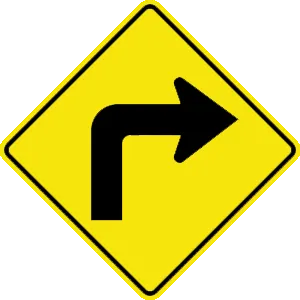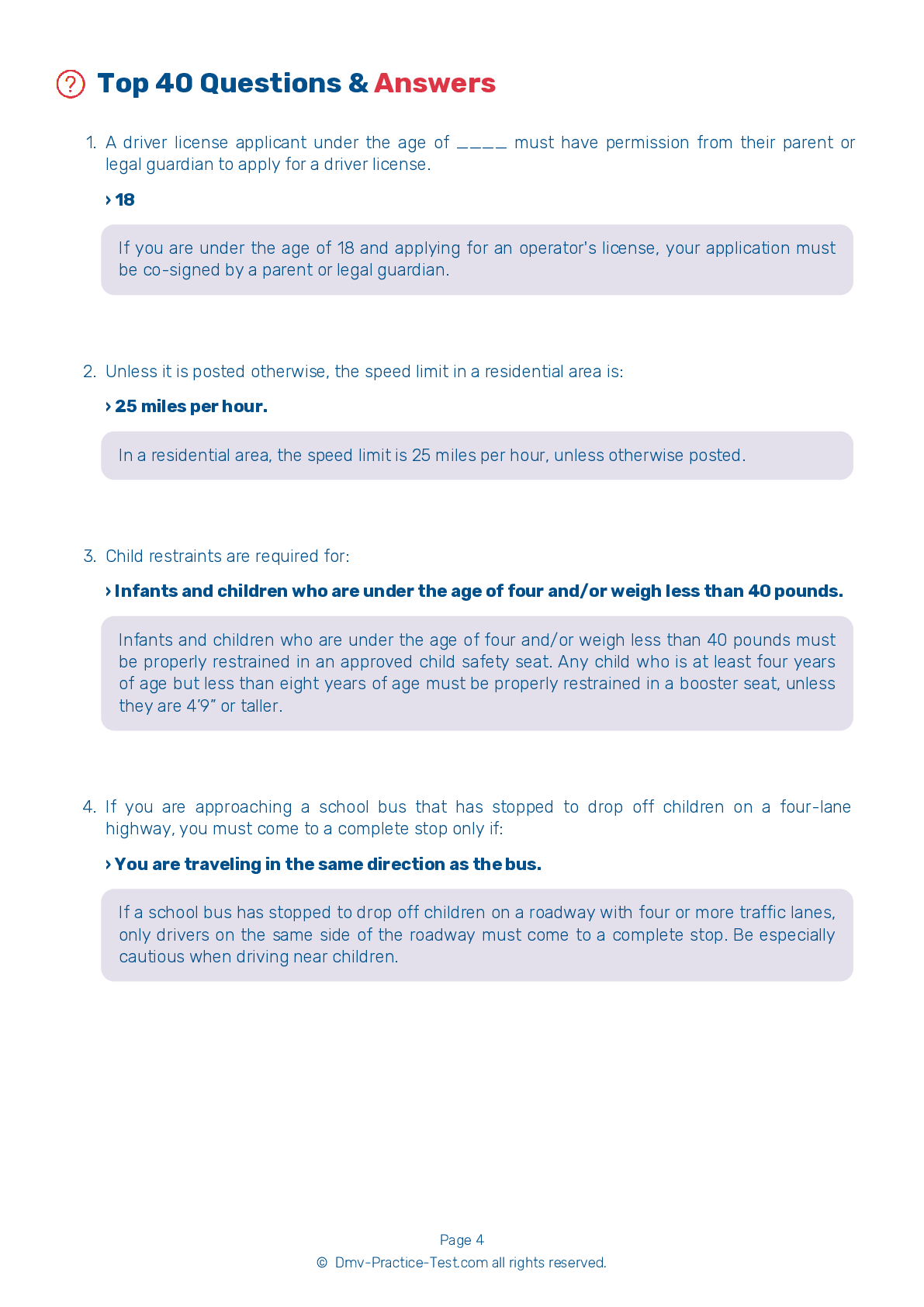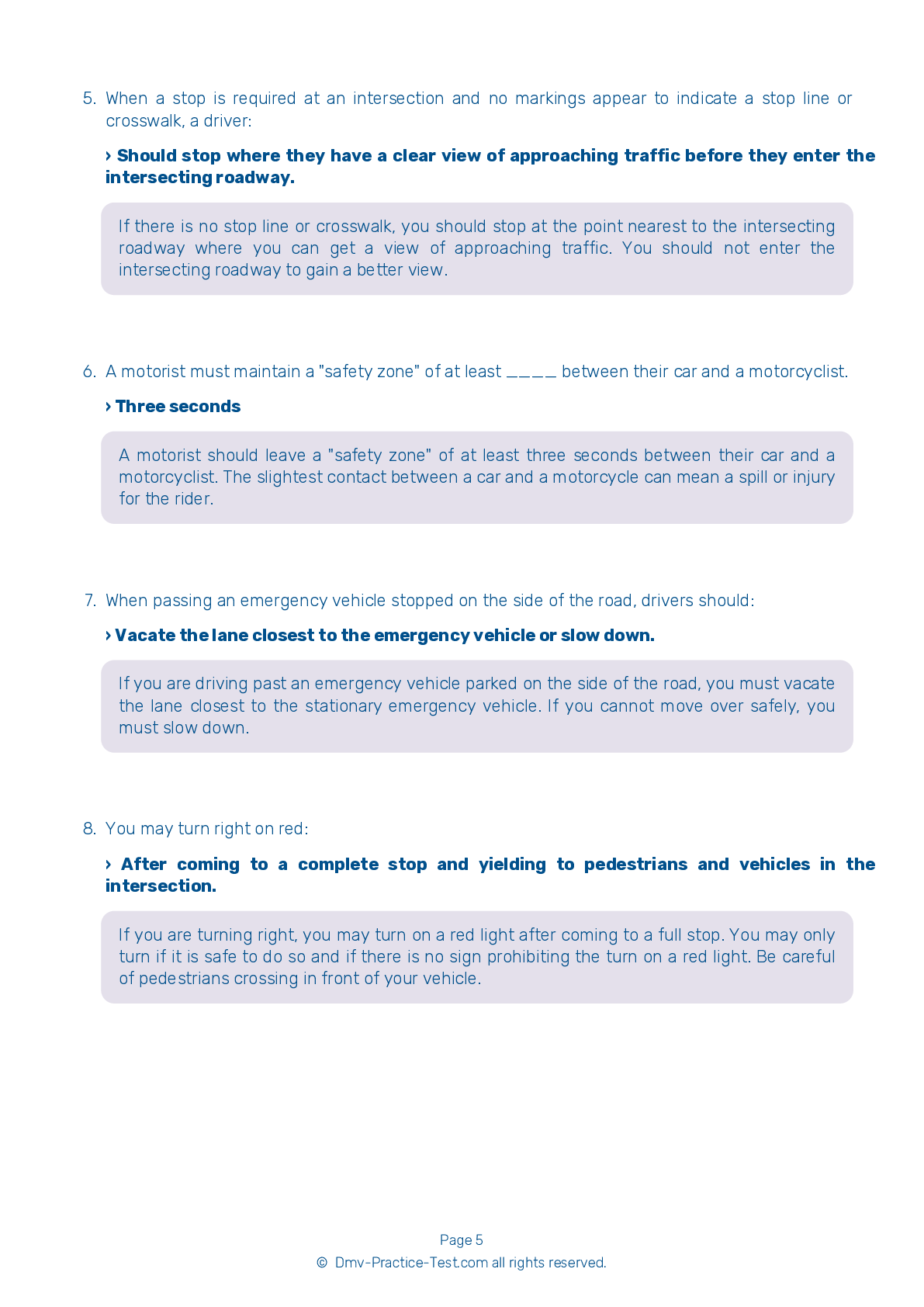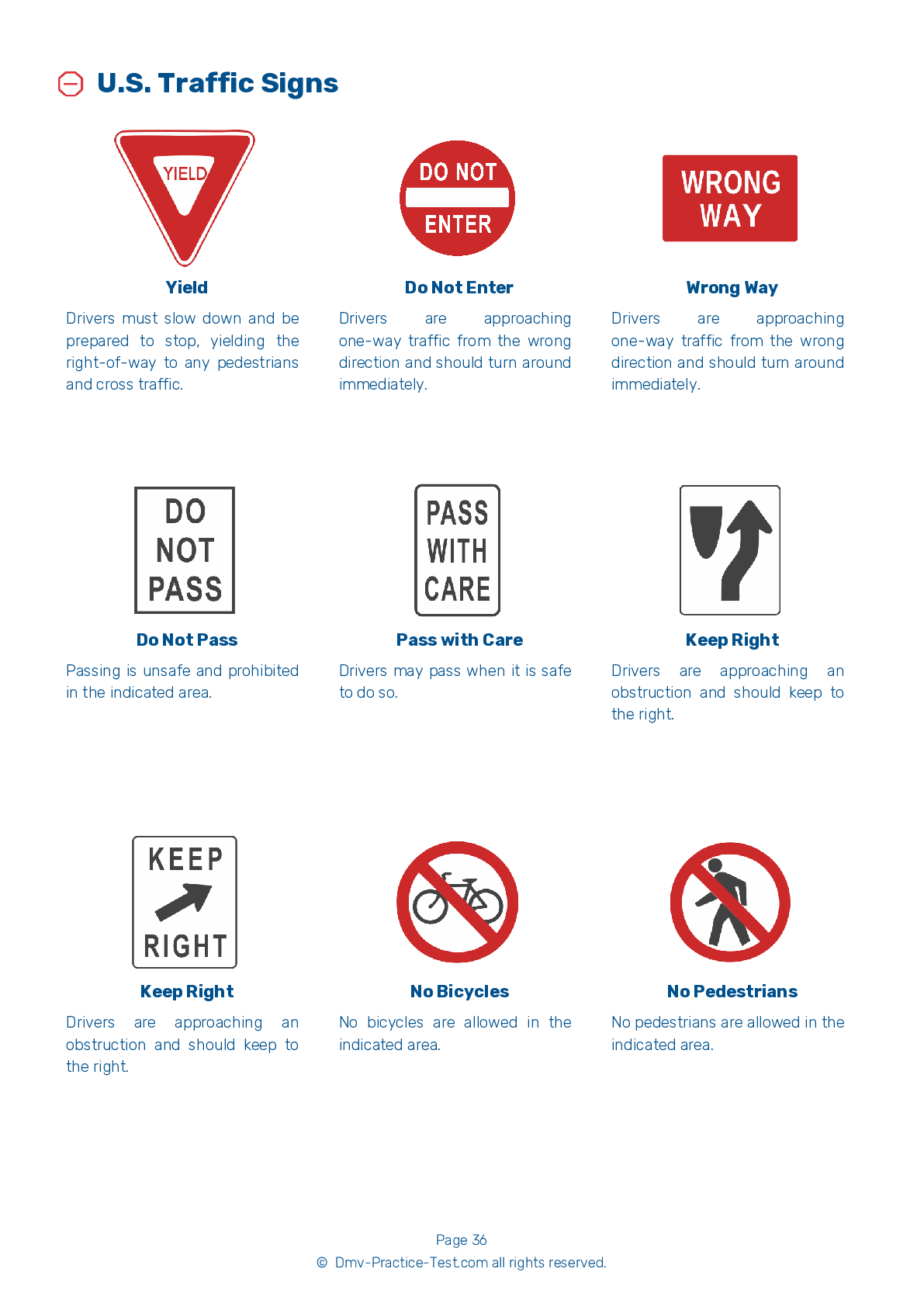FREE Ohio DMV Practice Test #4 Page 5 of 5
The practise exams for Ohio's DMV have been revised for January 2026. It comprises questions based on the most important traffic signals and laws for 2026 from the Ohio Driver Handbook. To study for the DMV driving permit test and driver's licence exam, use actual questions that are very similar (often identical!) to the DMV driving permit test and driver's licence exam.
Each question on the practise exam has a tip and explanation to help you recall the ideas. Questions about traffic rules, traffic signs, and driving statutes, as well as knowledge from the Driver Handbook, will be included in the written portion of the official Ohio DMV test.
You must properly answer 35 of the 40 questions to receive a passing mark. To help you prepare for your instruction permit or driver's licence, take this practise test from the Ohio Department of Motor Vehicles.
The DMV exam is offered in a variety of languages.
Using any form of testing help will result in an automatic fail, and the DMV may take further action against your driver's licence, so avoid it.
33 . This sign is used to warn drivers about:

This sign indicates that the road ahead curves to the right.
34 . This sign means:
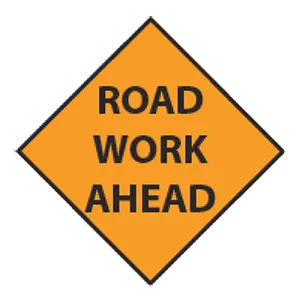
Construction and maintenance signs are orange-colored and are used to notify drivers of unusual or potentially dangerous conditions in or near work areas. This sign warns drivers that they are approaching a construction zone and that they should prepare to lower their speed and drive with extraordinary caution.
35 . A red and white triangular sign at an intersection means:
A triangular red and white yield sign means that you must decrease speed as you approach an intersection and yield the right-of-way to any vehicles or pedestrians in the intersection. You must be prepared to stop if conditions require it.
36 . What are the colors of signs that tell you the distance to the next exit on a highway?
Signs providing information about destinations are green with white letters or symbols.
37 . This road sign means:
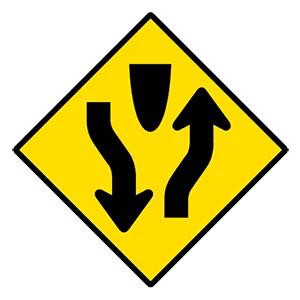
This sign indicates that a divided highway begins ahead. The road will split into two one-way roadways separated by a median or divider. You must keep to the right.
38 . This road sign means:

If you drive past these signs, you are going the wrong way and are at risk of a head-on collision. You should cautiously turn around.
39 . This road sign means:
